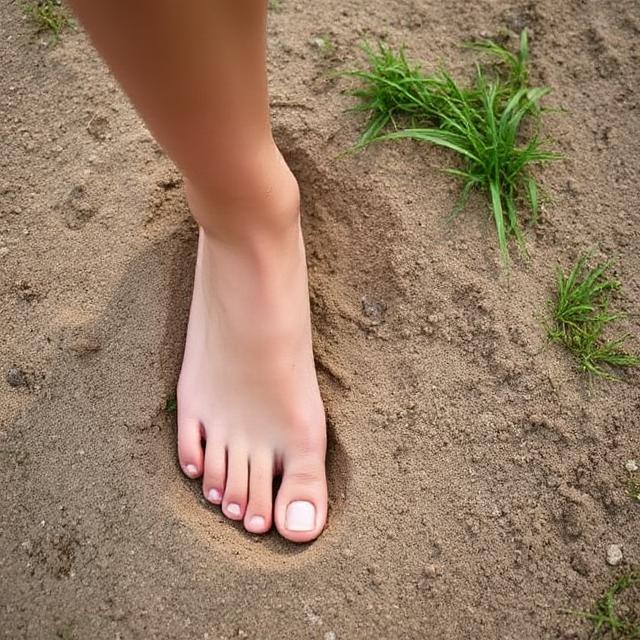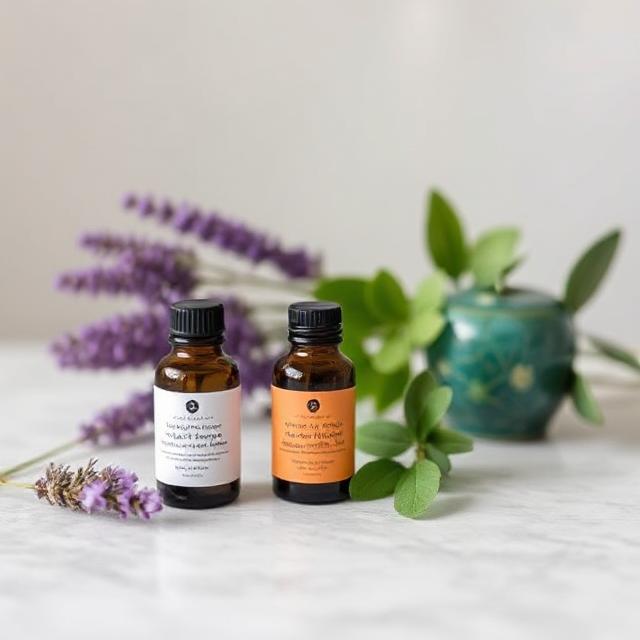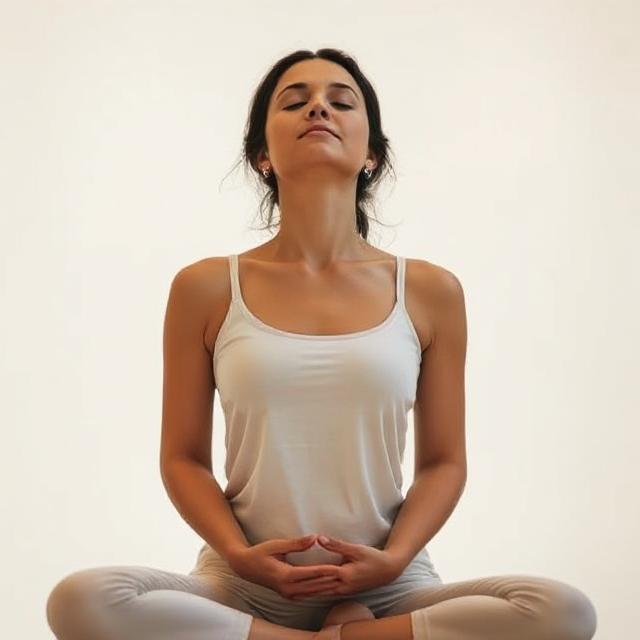In an era of wellness overload, it can be tough to separate the signal from the noise and find truly effective tactics. » Subscribe to The Times There may be a bountiful universe of lesser-known wellness techniques that can significantly improve your health, happiness and resilience over time, even as many people are turning to known standbys — like exercise, balanced diets and meditation. These are not just superficial fashions; some have long-standing cultural significance or increasingly robust scientific evidence to back their benefits. They provide new ways to clear your mind, fortify your body and nourish your spirit. Many of the unique approaches to wellness can catalyze a new kind of vibrancy that animates life and leads to boundless creativity and a more integrated relationship to both yourself and the world. Here, then, are 10 newfangled wellness techniques that you probably haven’t checked out yet, except there’s detail behind each to give you a sense of whether it’s right for you, and what you’d need to do to try it.
1. Forest Bathing (Shinrin-Yoku)
Forest bathing, or Shinrin-Yoku, is a Japanese tradition that promotes a slow, mindful dip into nature. Unlike hiking or other more intense outdoor activities, forest bathing is all the more about being in the forest—using all five senses to take in what the sights, sounds, smells, textures, and even tastes of the natural world have to offer. It forces you to slow your pace enough to notice details like the rough texture of tree bark, the light rustling of leaves in the wind, the earthy smell of moss and dirt underfoot or the song of birds overhead. Scientific research has demonstrated that forest bathing can produce beneficial changes in levels of the stress hormone cortisol, blood pressure, heart rate variability, and immune function, as measured by the production of natural killer cells. The deep sensory input helps soothe the nervous system, aiding in reducing anxiety and lifting mood. Click to expand Image In cities, committing to regular visits to natural areas and the use of forest bathing offers a remedy to over-stimulation and urban stress, providing a deep peace and mental clarity.

2. Earthing (Grounding) Therapy
Earthing or grounding, is a simple yet profoundly healing wellness practice of reconnecting with the Earth’s surface energy directly through physical contact with it. By walking barefoot on the ground (grass, sand, dirt, even concrete is okay, but not asphalt), your body can absorb the earth’s electrons that have been shown to be antioxidants to quench damaging free radicals. This electron transfer is thought to decrease chronic inflammation, to lower blood viscosity, and to strengthen the immune response. Preliminary evidence suggests that earthing may provide health benefits, such as better sleep, less pain, reduced stress and enhanced well-being, as well as faster recovery from muscle soreness. Nowadays most of us spend the vast majority of our time isolated from natural surfaces – either indoors or wearing shoes with synthetic soles. Restablishing this connection to the Earth, called grounding, by walking barefoot on the Earth every day— for at least 20-30 minutes–or sitting on the Earth can rapidly eliminate the static electrical potential generated from these everyday toxic electromagnetic exposures and reestablish the natural electrical balance in your body, promoting health and more rapid healing. Introducing earthing to your daily routine can be as straightforward as spending time sitting or walking in a garden or on a beach with bare feet

3. Cold Exposure Therapy
Cold exposure therapy, the practise of exposing oneself to extreme cold through cold showers, ice baths, winter swimming, and cryotherapy, is on the rise with more and more people turning to it as a means of enhancing physical and mental well-being. The sudden entry of the body into cold water stimulates the sympathetic nervous system, causing the release of endorphins (a chemical which resembles morphine and that is secreted in the brain) and in return promotes well-being. Cold activates brown adipose tissue (brown fat), which burns calories to generate heat and maintain metabolic health. Cold therapy may also facilitate : relief of systemic inflammation post-exercise muscle recovery Immune Booster By increasing the number of certain white blood cells in the body and by strengthening the performance of these white blood cells. Mentally and psychologically, being used to cold exposure gets you comfortable with being uncomfortable and works as a tool to break down mental walls. It’s also believed to help modulate the autonomic nervous system, which governs stress responses and how well we sleep. Many of them do recommend starting with very brief, cold showers or cycling of hot and cold water exposure before becoming brave enough to immerse in long ice baths or outdoor winter swims with someone to watch over you.

4. Sound Healing and Vibroacoustic Therapy
Sound healing is an early practice that uses the power of sound frequencies and vibrations for healing and balancing the body and mind. Vibroacoustic Therapy Vibroacoustic therapy is a more modern development in which low-frequency sound waves are transmitted to the body through specially designed chairs, mats or beds. These vibrations are able to enter into the body’s deep tissues that would be impossible to do simply by massaging the surface of the body which can stimulate a repair response in the cell (the so called DNA in a gene), improve circulation and reduce muscle tension and pain. Sound healing with instruments such as crystal singing bowls, tuning forks, gongs and drums promotes relaxation by changing brainwave patterns to those of the alpha or theta state, which is associated with deep meditation and calmness. This combined sensory experience provides a means of mental clarity, emotional release, and physical renewal that takes a different avenue to similar results. The hum of our voices and the vibration felt from a tuning fork resonate at their core and affect them profoundly, proving sound therapy is an effective treatment for stress-relate disorders as well as chronic pain, anxiety, and insomnia. Consistent sessions — whether in a group setting or at home with your own instruments — may deepen your mind-body connection and help you in maintaining overall health.

5. Forest Gardening for your Mind and Emotions
Forest gardening is a permaculture method that creates an edible landscape by growing edible plants, trees, shrubs, herbs and flowers in a series of natural layers in a food forest system. In addition to the ecological benefits, from a mental and emotional perspective forest gardening brings amazing wellness benefits. The process of creating, planting, and maintaining a varied garden sparks creativity, instills purpose, and brings you into a close relationship with the natural cycles of new growth and decay. Having something tangible to do helps facilitate mindfulness and being present, both of which can help alleviate symptoms of anxiety and depression. Gardening requires just enough of a workout to improve strength, flexibility and heart health without hammering the body. In addition, the availability of fresh fruits, nuts and herbs help us make healthier choices. Forest gardening can foster a sense of stewardship of the land, inspiring gratitude and reverence for nature in a way that studies indicate can increase overall well-being. Even a tiny forest garden in a balcony, a rooftop or a community plot can become healing green sanctuaries within urban environments, which can nourish both ecological sustainability and individual health.

6. Digital Detox with Nature Medicine
The constant onslaught of digital stimulus coming from one’s smartphone, computer and social media can lead to mental fatigue, anxiety, interrupted sleep and an overall feeling of disconnection. Most often a digital detox refers to taking time not to use electronic devices, but in conjunction with a trip to a natural environment, the benefits are multiplied. For the brain and body: When you spend extended time in nature (like on a camping trip, wilderness retreat or multi-day hike), it’s a restorative experience that can actually reset your brain and body. Exposure to daylight can support the body in resetting its circadian rhythms, and support better sleep. The stimulation of the sights and sounds of nature soothe the nervous system, lower levels of the stress hormone cortisol, and ease emotional imbalances. “One of the benefits of unplugging from screens: less information overload and digital distractions, and a chance for the mind to reset and creativity to kick in.” There are some pretty useful interpersonal benefits that come from group nature experiences–and they don’t include screens that get in the way of the conversation god dammit! Devoting oneself to periodic digital detoxes that include immersion in nature, even a weekend one, can enrich mindfulness, ease anxiety and restore some equilibrium in our tech-driven lives.

7. Lewi – DIY Aromatherapy Using Blends of Essential Oils
Aromatherapy, a centuries-old therapeutic technique, is based on the use of plant-derived essential oils to affect mood, cognition, or health. Customizing your essential oil recipes will elevate aromatherapy, as you customize your oil blends to your emotional and physiological needs. For personalization a custom blend may include soothing lavender with invigorating peppermint, grounding cedarwood with balancing citrus, depending on your individual tastes and wellness needs. Creating your own blends creates mindfulness and awareness of the body and mind as you become aware of what scents work well with your body. Using(filtered through) our blends in a diffuser or added to your favourite massage oil or bath product for an added sense of wellbeing. Research suggests some essential oils can help with things like anxiety, sleep, focus, and pain relief. Personal aromatherapy to create a healing environment that supports your physical, emotional and mental well-being with a subtle but effective scent anchor to wind down and carry with you through the day.

8. Laughter Yoga
Laughter yoga is a light-hearted health and wellness activity that joins deliberate exercise of laughter with yogic deep breathing. It is not like regular yoga and you don’t need to be flexible or stand in complicated postures, so anyone can do it, regardless of their age or level of fitness. The key is that it seems like it doesn’t matter if it’s a spontaneous act of laughter or a forced one, the benefits can be the same. Laughter boosts endorphin production and decreases stress hormones like cortisol; it supports immune function and cardiovascular health by increasing blood flow. For group laughing, the social interaction in laughter sessions acts as a positive feedback loop that generates increased amounts of joy and bonding among the members. Laughter Yoga helps overcome emotional barriers and increases strength and energy as well as increases the release of negative emotions. Regular laughter yoga practice can decrease symptoms of depression and anxiety, improve life satisfaction and cultivate a joyful attitude. It’s a marvelous reminder that the simplest, and often most enjoyable, wellness practices can be some of the most potent.

9. Breathwork with Conscious Connected Breathing
Breathwork includes many different kinds of breathing methods that are intended to help with a variety of mental and physical conditions, however, conscious connected breathing is particularly powerful. item ‘contentment breath’. The practice involves circular continuous breathing – NO pause between the inhalation and the expiration so as to facilitate maximum oxygenation and release of emotional trauma. Sessions, which typically last 30 to 90 minutes and are often led by trained facilitators, are meant to help you navigate altered states of consciousness and emotional release without losing control or getting stuck. –When practiced regularly, this conscious connected breathing leads to nervous system regulation, decreased anxiety and depression and increased mental clarity, as well as emotional flexibility and resilience. A lot of folks even say they find themselves incredibly relaxed, centered, and in tune with their own inner world after sessions. This work supplements meditation, psychotherapy and body work by offering a direct approach to emotional healing and self-realisation. Practicing breathwork as part of your wellness regimen will only deepen your threshold for stress management and full body wellness.

10. Writing with an emphasis on gratitude and self-compassion
Journaling is a classic mental clarity and emotional processing tool offerings, but blending gratitude writing with self-compassion practices brings a level of healing that may have previously been untapped. When you write over and over about what you’re grateful for the brain begins to focus on the negative, it rewires neural pathways toward positivity and contentment. Paired with self-compassion journaling — where you lovingly recognize your struggles and speak to yourself as you would a supportive, gentle friend and not a strict, critical one — it has been shown to decrease anxiety and depression. This two-fold approach helps in developing emotional strength, kindles one’s ability to forgive oneself and reduces toxic self-criticism. Reflective prompts such as “What difficult thing amazed me today?” or “How can I show myself more kindness?” help you develop mindfulness and emotional intelligence. Having this kind of journaling be a daily practice promotes a healthy and nurturing inner voice, which is good for mental health overall and makes it easier for you to pass through life’s challenges as a blessing of ease and grace!

By venturing beyond conventional wellness advice and embracing these unique, evidence-backed strategies, you open doors to deeper vitality and joy. Each method offers a distinctive blend of physical, emotional, and mental benefits, inviting you to experiment, listen to your body, and discover what resonates most. Integrating these approaches into your lifestyle can build resilience, enhance self-awareness, and foster a more harmonious balance between mind, body, and spirit. As you explore these innovative wellness pathways, you may find yourself revitalized in ways you never expected, equipped with fresh tools to thrive in today’s complex world.


